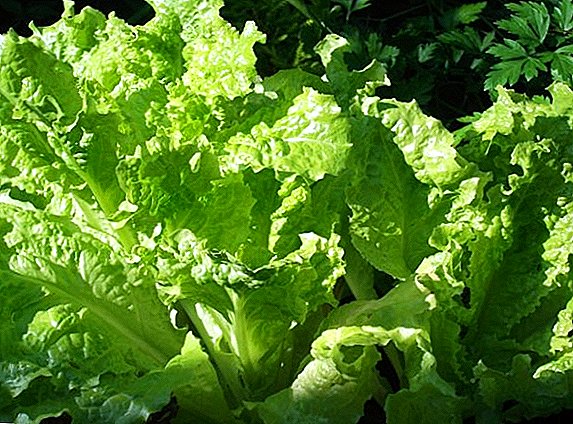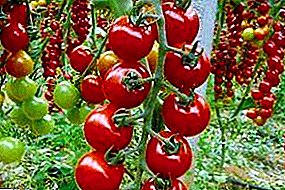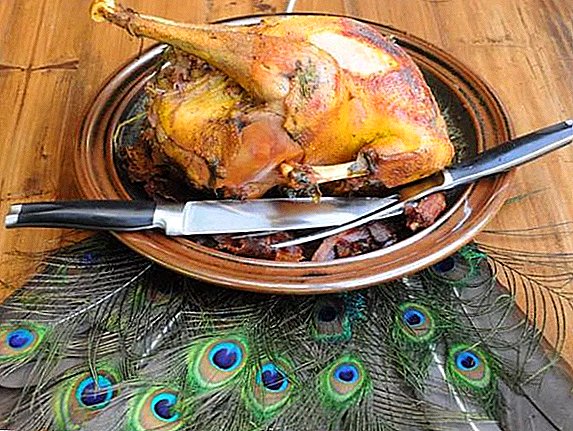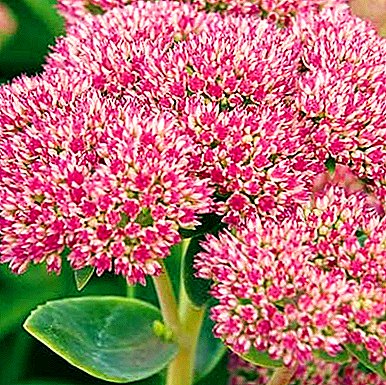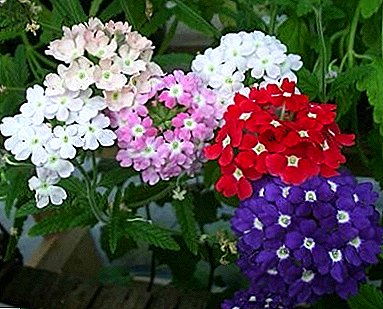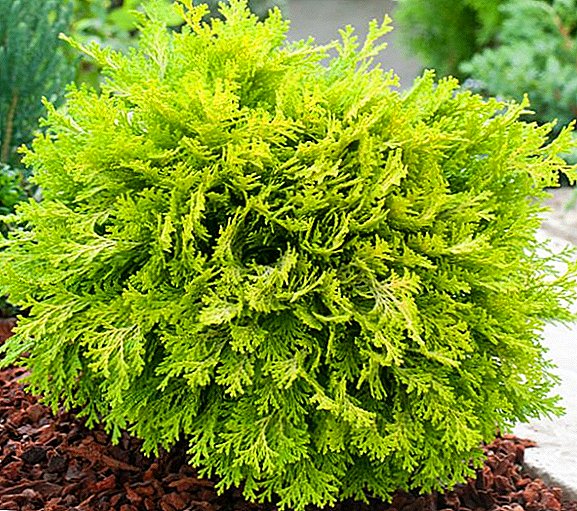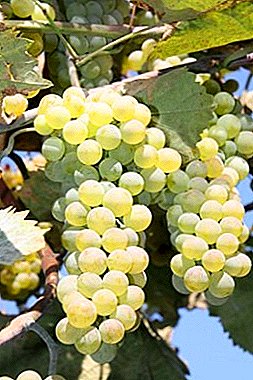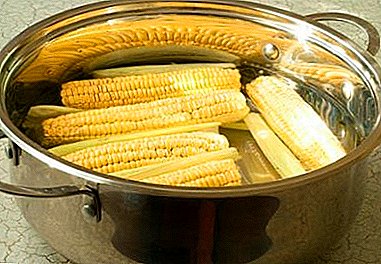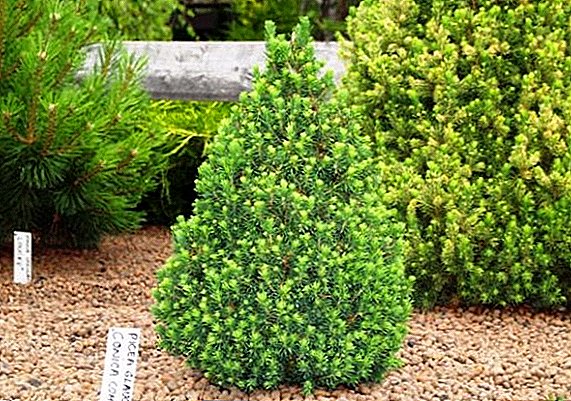 The spruce "Konica" or "Canadian spruce" according to the botanical description refers to a species of the genus Spruce of the Pine family. This is an ornamental evergreen plant, on flowerbeds and terraces reaches a height of 0.5 meters, and in the garden - 2 meters. North America is considered to be the birthplace of this beautiful plant, where it was first used for decorative purposes in the early twentieth century. In this article we will talk about how to properly plant Canadian spruce and care for it.
The spruce "Konica" or "Canadian spruce" according to the botanical description refers to a species of the genus Spruce of the Pine family. This is an ornamental evergreen plant, on flowerbeds and terraces reaches a height of 0.5 meters, and in the garden - 2 meters. North America is considered to be the birthplace of this beautiful plant, where it was first used for decorative purposes in the early twentieth century. In this article we will talk about how to properly plant Canadian spruce and care for it.
Landing place
Place for landing should be maximum protected from the wind. Due to the peculiarities of the root system, Konica spruce can die if it is landed in a place with a strong wind. This tree has one feature: over time, the taproot dies off, and the plant is kept in the soil only at the expense of the surface roots. Winds are especially dangerous for old plants, whose age has exceeded 12-15 years.

Also consider the fact that this ornamental plant loves a lot of sunshine. Penumbra may also be suitable for planting. But if you plant a plant in the shade, it can lose all its decorativeness. In addition, the tree will grow more slowly, and over time it can completely wither and die.
The best soil for spruce Konika will be sandy or loamy, which has good water and breathability. Organic matter should be a moderate amount, the acidity of the soil should slightly exceed the norm. Young seedlings react poorly to underground floods, so consider this factor when planting.
Canadian conic spruce is planted next to junipers, thujas, cypress trees, pines. You can also use spruce as a hedge. Especially beautiful conic spruce looks on a short-cropped lawn near the flower bed.
Best time to land
This type of ornamental plant can be planted in open soil. almost any time of year. In the southern regions of our country, a tree can be planted even in winter, when it is at rest. But the best time for planting will be the middle - the end of spring, or the beginning - the middle of autumn.

There is a lot of controversy and reasoning about how to plant Konik spruce in summer, and whether it is worth doing it on hot days. In most cases, experts advise against doing this in the middle of summer, but if you do decide to plant a tree in the summer, then it is best to do it in cloudy and cool weather. After planting, the plant should be watered twice a week (8-10 liters of warm water should be poured onto one tree).
Requirements for planting material
When buying a Christmas tree pay attention to color needleswhich should be intense. If in the nursery you buy a sapling that has grown in a container, then turn the container over: if the earth does not get enough sleep, then the planting material is good. The roots of the purchased seedlings should be wrapped in a damp cloth or mesh.
Did you know? ATThe first botanical description of the Canadian fir tree was made by English scientist Philip Miller (1691 - 1771). In the Botanical Garden of BIN RAS, one of the oldest in Russia, Canadian spruce was noted in catalogs in 1816.
Sometimes a coniferous plant looks healthy, but in fact it is no longer viable. Check needles ate. Dead needles begin to turn yellow at the edges, and when pressed, they lean to the side. Live needles are elastic, and when pressed they bend. And remember: the younger the sapling, the easier it will be for him to take root in the new soil.

Planting Procedure
First you need to dig a planting hole, which should correspond to the size of the root system of the seedling. The optimal fovea size for a 1-2 year old plant: 60 cm deep and 80 cm in diameter. If the seedling is large, then the fossa should be a little more than a coma of root soil. For tall plants, the distance between the pits should be more than 3 meters, and for dwarf spruce trees - from 1 meter.
Before planting spruce fossa need to drain a broken brick. It must be poured into the fossa with a layer, the thickness of which will be at least 15 cm. Then a layer of fertile land is poured out: it can be forest soil or ordinary garden soil, to which humus or compost is added.
A sapling is inserted into the prepared hole along with a clod of earth. The root neck (the junction of the root and the trunk) should remain at ground level and in no case go deeper. Then planting material should be sprinkled with fertile soil and slightly compacted. After pouring it with warm water and fix if necessary (can be tied to two pegs).
Important! It is not recommended to purchase saplings of spruce with bare roots. Such planting material will hurt a lot, and in the worst case, it may even die.
After the fir has been planted and fixed, the soil around it can be slightly covered with humus. In this case, the sapling will start growing faster and take root.
How to care
Spruce Canadian Konica after planting in open ground requires special care. Timely watering, loosening and dressing are the key to the decorativeness of your tree.
Watering and loosening the soil
Adult and rooted spruces normally tolerate two to three weeks of summer drought. But young dwarf trees need watering at least once every 1.5 weeks.
Did you know? Fir wood was used to make violins by string masters such as Amati and Stradivari. Musical instruments made of such wood sound very beautiful due to the even distribution of fibers.
To loosen the soil should be in dry periods, which are often only in summer. Loosening contributes to the fact that the internal soil moisture will evaporate less. At the same time, irrigation and rainwater will be better absorbed into such a soil.

Feeding and mulching
Any adult and young ornamental plant needs feeding once a year complex fertilizers. It is best to use those fertilizers that are designed specifically for coniferous ornamental plants. Freshly planted seedlings are recommended to be watered with growth and root formation stimulants ("Gerbamin", "Heteroauxin", "Epin"). Young seedlings in the first two or three weeks after planting need spraying "Ferravit".
For fertilizing, choose mineral fertilizers that do not have a high nitrogen content. Organic fertilizers based on biohumus, compost, and potassium magnesia are excellent. Also recommend doing dressing dolomite flour.
With a strong excess of moisture, the upper roots of spruce can rot. To avoid this, the soil around the tree must be mulched with sawdust or shavings of coniferous trees, pine needles or bark.
Mulch allows you to balance the soil moisture and maintain its normal characteristics. Sometimes the soil around the plant is covered with decorative stones, for example, expanded clay. This way of mulching adds, to everything else, the beauty of any terrace or alley.
Diseases and pests
Spruce Konica may be subject to certain diseases and be damaged by various pests. Timely wrestling will help your plant stay beautiful and healthy. Here is List of major diseases and pests of the Canadian ate:
- Coniferous disease Schutte. The disease is fungal in nature. The plant first acquires a black tint, then becomes covered with "frost", and then all the needles begin to fall off. With the timely detection of the disease, the plant can be sprayed with a 3% solution of copper sulfate, "Alirin-B" or "Trichodermin". With a severely neglected disease, the tree must be cut.
- Tracheomycosis is a fungal disease of the root system of conifers. This disease in most cases affects young trees. The needles eventually turn red and fall. This ailment is not treatable. Affected plants are cut and burned, and the soil is treated with copper sulfate solution.
- Rust is another type of fungal disease that affects the needles and forms yellow or orange growths on it. Over time, the needles begin to fall off. Treated this disease "Gliokladinom" or "Vectra." Processing should be carried out once a week for a month.
- Sometimes the bark of an ornamental plant affects small brown or black bugs, which are called bark beetles. They gnaw the bark, lay eggs there and feed on wood. The chance to save the plant in this case is reduced to almost zero.
- The spruce needles may be affected by the larva of the fir spruce guard, which is capable of laying up to 1500 eggs. It feeds on pine needles, causing the latter to fall. To combat this insect use 0.3% solution "BI-58".
Any ailment contributes to the suppression of the ornamentation of spruce. Proper and timely care of the plant will not allow fungi and insects to hit it.
Shelter for the winter
Coniferous trees with extreme ease tolerate even the most severe winter frosts. Only young and recently planted spruces can suffer, the root system of which has not yet fully hardened in the soil. Such plants need wrap with net or twine. This is done carefully so as not to break off the branches.
Important! If a fir tree is covered with lutrasil for the winter, then its thickness should be at least 60 microns. Otherwise there is a risk of frostbite needles.Old Canadian firs, which have been decorating your garden, terrace or alley for years, are not needed. They are watered well enough in late autumn, and they calmly winter the cold frosts.
Use in landscape design
Spruce Canadian Konica - one of the most popular types of conifers, which are used in landscape design. She looks good in both single and group performance. When a young seedling reaches its optimum height, it becomes an excellent decoration for mixborders.

Canadian spruce can often be found in containers on terraces, balconies, roofs, avenues, etc. It will be an excellent background decoration for any flower beds, rock gardens. In addition, Konica spruce harmoniously looks on an even and low lawn among other coniferous ornamental plants.
In any case, this tree will be a great decoration for each individual balcony or plot. Spruce Konica perfectly harmonizes with absolutely any flowers or plants. If the Canadian spruce is properly looked after, then it will give you its beauty for decades.


